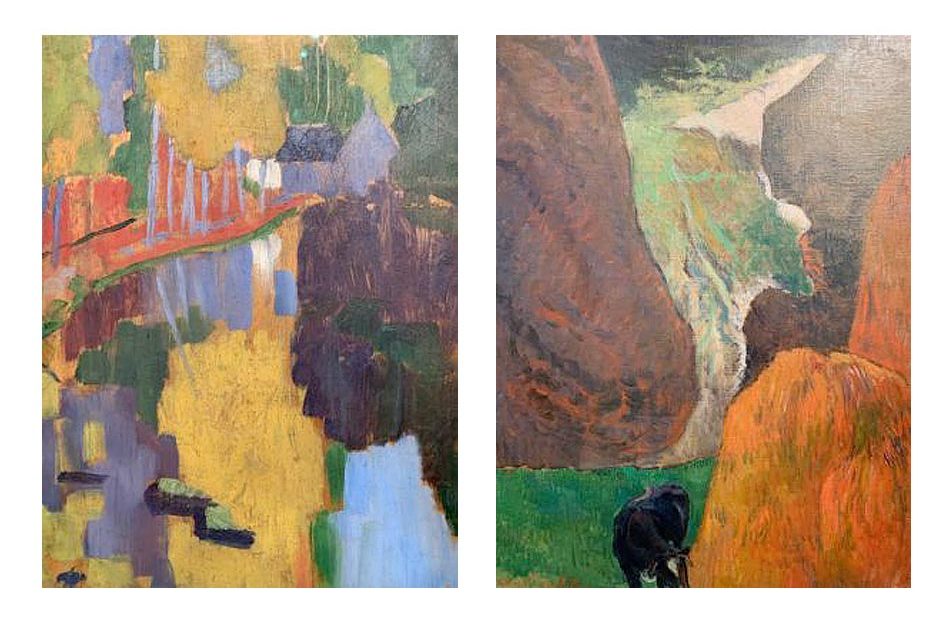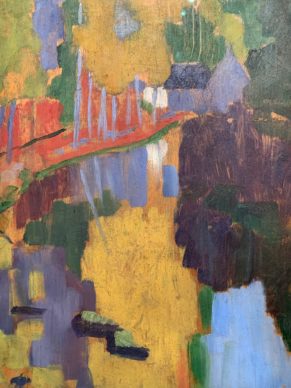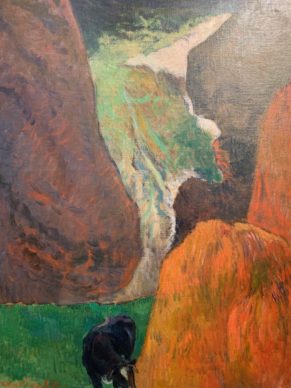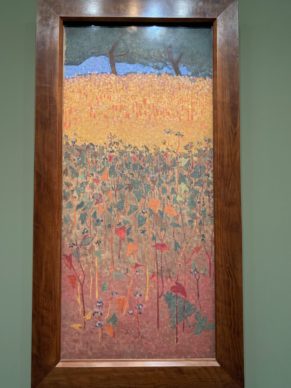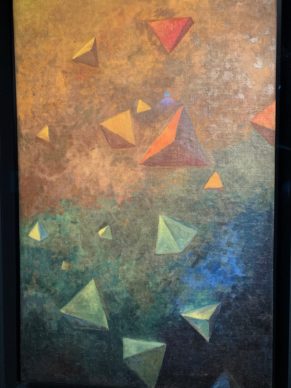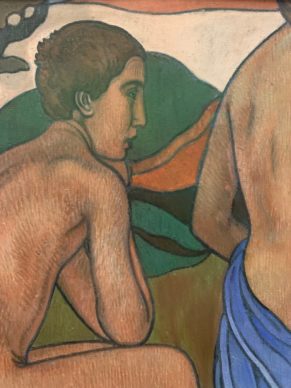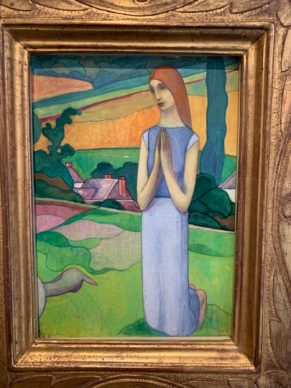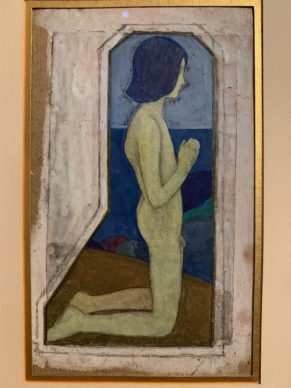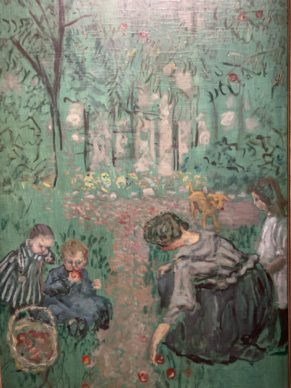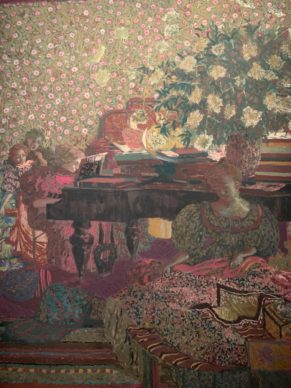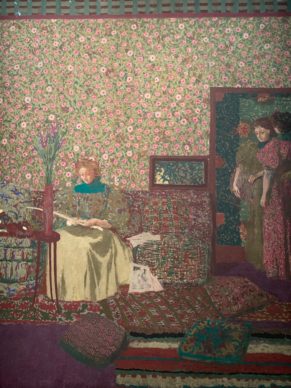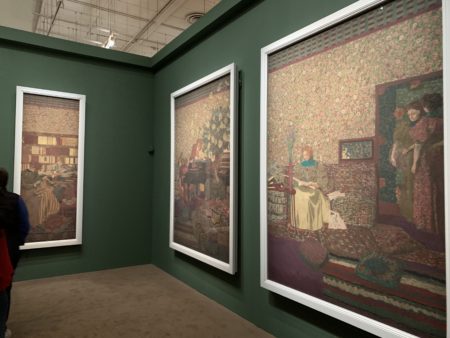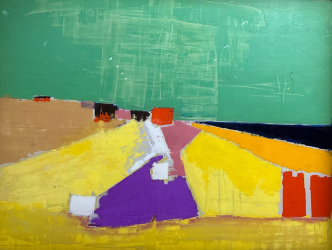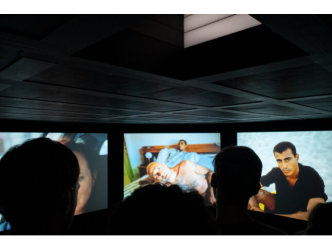Paul Gauguin
“How do you see this tree? Is it really green? Use green then, the most beautiful green on your palette. And that shadow, rather blue? Don’t be afraid to paint it as blue as possible”.
During the summer of 1888 in Brittany at Pont Aven, Paul Gauguin (1848-1903), an artistic genius who saw himself, quite rightly, as the guru of the avant-garde, dictated to the man who would become his disciple, Paul Sérusier (1864-1927), the guidelines for a new kind of painting.
The talisman
A tiny canvas (27 x 21cm) named “Le talisman” (The Talisman) attests to this today. Amid the lush green surroundings of a place that is now famous, the aptly named “bois d’amour” (woods of love) where the trees are reflected in the water, legend has it that Sérusier painted while directly following Gauguin’s instructions. Break free from the representation of conventional reality. Dilute and gently distort the shapes. Heighten the colours through contrasts…
Sérusier spread the word
When he returned to Paris, Sérusier spread the word among his circle of young artist friends who called themselves the Nabis (meaning prophet in Hebrew) and chucked in his academic painting. The group’s theoretician was Maurice Denis (1870-1943) and he offered him the famous talisman.
Flying pyramids
In 1890 Denis wrote, in a line that would go down in history, that a picture “before being a war horse or a nude woman or an anecdote, is essentially a flat surface covered with colours assembled in a certain order.” This adventure and its pictorial repercussions are traced in an exhibition of 55 artworks at the Musée d’Orsay.
One of the most enigmatic paintings in this beautiful display is a veritable art history anomaly painted around 1910 by Sérusier, a “Tétraèdre” (“Tetrahedron”) depicting pyramids flying through the sky. The composition is somewhat reminiscent of the work of Hilma af Klint (1862-1944) who was on show at the Guggenheim in New York until 23 April. A geometric abstraction ahead of its time.
Charles Filiger
At the Musée d’Orsay we also encounter some works by a little-known painter who had moments of genius, Charles Filiger. This visionary, who visited Gauguin at Pouldu in Brittany in 1890, was also inspired by the Italian Primitives. He is incidentally the subject of a remarkable exhibition comprising 83 works – a quarter of his total production – at the famous Malingue gallery on the Avenue Matignon (1). André Breton saw in him a precursory surrealist streak.
Immersive nabis
Lastly, by pure chance the Museum of Luxembourg also happens to be staging an exhibition of 89 works on the theme of the Nabis and the decorative arts. You can visit it afterwards, as you travel through art history, as the extension of what took place at Pont Aven. Here the artworks by Bonnard, Vuillard and Maurice Denis allow us to experience total art – these days we would talk about immersive art – with their series of huge panels reconstituted for the show.
Pierre Bonnard
We fall, for example, into an extraordinary garden painted across four large canvases dating from 1895 to 1899 by Pierre Bonnard (1867-1947) in which the vivid green predominates to reveal women and children on the grass. Bonnard was also the subject of a major exhibition at Tate Modern in London until 6 May, which barely touches on this aspect of his work.
Visual delight
We’re literally hypnotized by the floral motifs that pervade the walls of the interior scenes depicted in four canvases from 1896 by Edouard Vuillard (1868-1940) in which the women are quietly occupied. This is where the decorative arts meet and merge with art itself. A real visual delight.
Until 2 June, “Le Talisman de Paul Sérusier, une prophétie de la couleur”. Musée d’Orsay.www.musee_orsay.fr
Until 30 June, Les Nabis et le décor. Musée du Luxembourg. https://museeduluxembourg.fr
Until 22 June. Filiger. Malingue.net.
Support independent news on art.
Your contribution : Make a monthly commitment to support JB Reports or a one off contribution as and when you feel like it. Choose the option that suits you best.
Need to cancel a recurring donation? Please go here.
The donation is considered to be a subscription for a fee set by the donor and for a duration also set by the donor.

